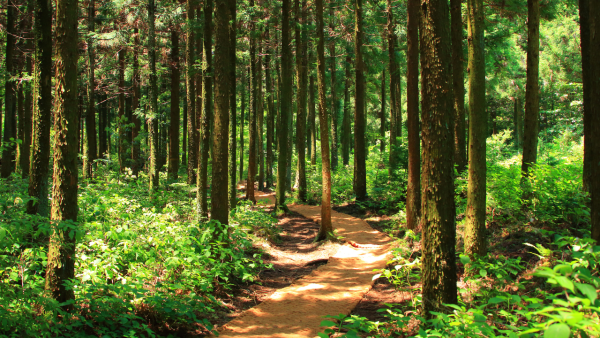
India is famously known as the land of Ayurveda, rich in biodiversity and ancient wisdom about medicinal plants and their healing properties. For centuries, forests have been the natural pharmacy for millions, providing “vanaspati” — the forest wealth of medicinal plants critical to health and wellness. However, due to urbanization, deforestation, and unsustainable harvesting, many medicinal plants are now threatened or endangered.
Patanjali Ayurved, a brand synonymous with traditional Indian health and wellness — is spearheading efforts to revive India’s vanaspati culture through large-scale cultivation and conservation of medicinal forests . Its initiatives are not only preserving nature’s healing gifts but also promoting sustainable development , traditional knowledge, and economic empowerment.
What is vanaspati culture?

Vanaspati (literally “lord of the forest”) refers to the vast diversity of plants in forests that have medicinal value. These plants have been an integral part of Ayurveda and other Indian traditional healing systems, forming the backbone of many herbal remedies used for treating illnesses, improving immunity, and promoting longevity.
The vanaspati culture emphasizes the conservation, propagation, and responsible use of these medicinal plants within their natural forest ecosystems. This traditional practice ensures the sustainable use of medicinal plants, preserving biodiversity and ecological balance.
One landmark project is the World Herbal Forest in Morni Hills, Haryana, a sprawling 1,000-acre forest developed in partnership with the Haryana government. The goal is to cultivate over 25,000 varieties of medicinal plants in one location, creating a living repository of Ayurveda’s herbal wealth. This forest is envisioned as a center for conservation, research, education, and sustainable harvesting.
Their efforts also include the establishment of herbal gardens and nurseries across various Indian states, encouraging farmers and communities to grow medicinal plants. This not only safeguards rare species but provides livelihood opportunities and promotes organic cultivation practices.
Why are medicinal forests important?

The restoration and conservation of medicinal forests carry numerous benefits:
Biodiversity preservation: India’s forests are home to thousands of medicinal plants, many of which are endangered. Medicinal forests protect these species and maintain ecological balance.
Sustainable resource management: Controlled cultivation reduces the pressure on wild populations, ensuring long-term availability of herbs essential for Ayurveda and herbal medicines.
Health and wellness: Availability of fresh, high-quality medicinal plants supports the production of effective Ayurvedic remedies , contributing to preventive and curative healthcare.
Scientific research: These forests serve as natural laboratories for studying plant properties, improving formulations, and discovering new therapeutic applications.
Data and impactPatanjali’s World Herbal Forest in Haryana is a shining example of large-scale medicinal forest revival. Since its inception, the forest has planted over 25,000 saplings across 200+ species of medicinal plants such as Ashwagandha, Tulsi, Amla, Neem, and Guduchi — all known for their powerful health benefits.
According to Patanjali Ayurved’s reports, the herbal forest has increased local biodiversity and attracted native wildlife, supporting ecological restoration. The project has also engaged local communities through awareness programs and employment, linking conservation with socio-economic development.
Challenges and the way forward
While these initiatives are commendable, reviving vanaspati culture on a national scale requires sustained efforts from multiple stakeholders, including government agencies, research institutions, farmers, and the public. Key challenges include:
- Protecting forests from illegal logging and land conversion
- Educating communities on sustainable harvesting
- Developing better propagation and cultivation techniques
- Increasing investment in herbal research and quality control
Integrating modern science with traditional knowledge is essential to improve the yield and potency of medicinal plants and develop new herbal therapies. Encouraging youth participation and leveraging technology for mapping and monitoring plant diversity can further enhance conservation.
-
Vitamin B3 and skin cancer prevention: Science reveals nicotinamide's protective role

-
Foxconn teams up with Nvidia on AI factory infrastructure development

-
GCCs to lease 50-55 msf office space in top-6 Indian cities by FY2027: ICRA

-
Superstar Mahesh Babu to Launch Zee Studio, Prerna Arora's and Sudheer Babu's JATADHARA Trailer -- A Milestone Event

-
China raises hiring age limit to tackle job market bias
